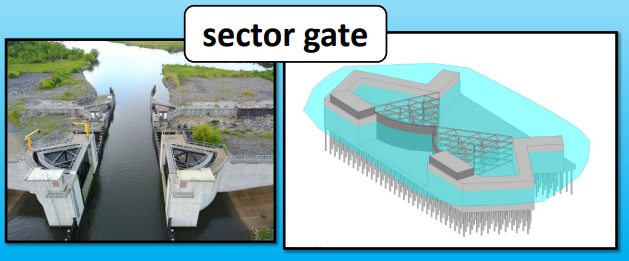Florida is home to pristine beaches, diverse and exotic wildlife, and unparalleled natural landscapes. This environment drives the state’s booming tourism industry — approximately 131 million tourists visited Florida in 2019 and the state’s beaches alone produce an estimated $50 billion in travel and tourism annually.
But flooding from sea level rise and hurricanes increasingly threatens the safety of Florida’s residents, environment and economy.
First Street Foundation estimates over 1.8 million Florida properties are at risk of flooding, with that number increasing to nearly 2.2 million by 2050.
Protecting Florida’s coast is no small feat. It will require extensive studies to determine an approach that works for each region. Coastal planning must take a comprehensive approach that includes both hard and natural infrastructure to protect people from flooding while also benefitting the state’s ecosystems and tourism economy. Natural solutions can help secure a more resilient future for Florida’s residents, environment and economy. Here's how. Share on X
Two plans with high price tags but few natural solutions
The U.S. Army Corps of Engineers (Corps) recently released several Coastal Storm Risk Management Feasibility Studies throughout the state, with plans for addressing risk through a mix of engineered solutions.
The $4.5 billion Miami-Dade Back Bay Coastal Storm Risk Management study examines the region’s coastal storm surge flood risks. The Corp’s draft plan involves nonstructural measures (elevation and floodproofing), structural measures (storm surge barriers, floodwalls and pump stations) and natural infrastructure (mangrove and native vegetation plantings).
However, the plan fails to address ongoing sea level rise and how it will impact minority communities, habitat and the aesthetics of this waterfront community.
The $2.2 billion draft plan for the Collier County Coastal Storm Risk Management study includes similar structural components with surge barriers and floodwalls, but also suggests beach nourishment, non-structural measures such as elevation and acquisition, and a single oyster reef restoration project.
Unfortunately, many of the structural measures could exacerbate beach erosion, damage critical habitat and destroy portions of Delnor-Wiggins State park.

There are a few common downsides to hard infrastructure like the surge barriers, gates and floodwalls prioritized in the Corps’ current plans, including detrimental impacts on wildlife, water quality and erosion. They can also redistribute risk to adjacent unprotected areas and give communities a false sense of security resulting in disastrous consequences when they fail.
Fortunately, natural solutions are available that can help address some of the current concerns with the plans.
Natural solutions can protect Florida’s residents, wildlife and economy
Natural infrastructure like barrier islands, mangrove and reefs provide the first line of defense for coastal communities to withstand the impacts from coastal storm surge flooding and can also help mitigate impacts from sea level rise.
Natural features also have the capacity to adapt to changing conditions and can increase their efficacy over time, unlike concrete and steel features. These features also benefit Florida’s unique ecosystems and wildlife habitat, providing ecological, economic and social benefits often at reduced costs over time.
Research shows that natural infrastructure projects deliver a wide range of other co-benefits. For example:
- Mangrove restoration can be two to five times cheaper than some structural measures.
- Coral reefs and salt marshes can reduce wave heights by an average of 70% or more, while reduction from mangroves and seagrass beds is over 30%.
- Every mile of wetland can reduce the height of a seawall or dune by one to two feet.
My colleagues and I are committed to working with the Corps, state and federal policymakers, and local communities to ensure that they are leveraging the best science and investing in the most cost-effective solutions to secure a more resilient future for Florida’s residents, environment and economy.
What can you do? Stay informed. EDF Florida recently launched a newsletter. Click here to sign up or follow us on Twitter and learn more about what we are doing in the state and how you can be involved.









